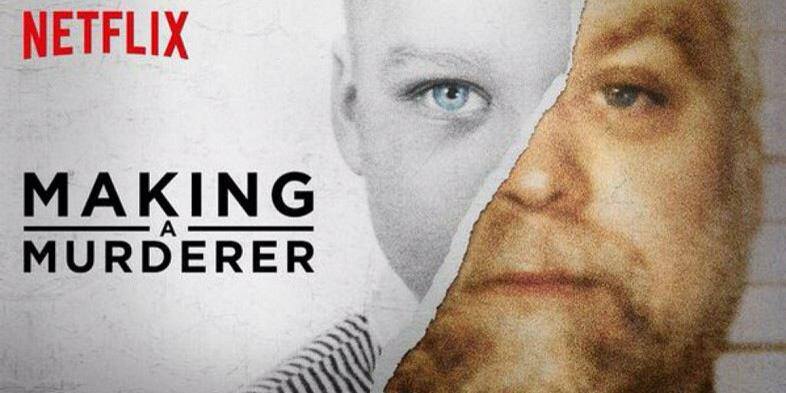
The case of Steven Avery has occupied much social media conversation following the success of the ten-part Netflix documentary, with many people believing there has been a gross miscarriage of justice. This article draws on the experience of two bestselling crime fiction authors, Neil White and Steve Cavanagh, who have also worked on both sides of criminal law, as they examine the evidence in the case, each presenting one side of the case.
Neil White has published nine crime fiction novels to date, including a number one ebook bestseller, Cold Kill, and his tenth novel is due for publication this summer, published by Zaffre.
Steve Cavanagh is the author of the Eddie Flynn novels, the first of which, The Defence, was longlisted for the CWA Ian Fleming Steel Dagger for thriller of year.
Readers should be aware that the following debate takes from information in the Documentary show “Making a Murderer” and some media coverage thereafter. As this is an emerging and ongoing situation certain facts may not have been assessed during the writing of this article.
The prosecution – Neil White

I have been a criminal lawyer for over twenty years, training and working as a defence lawyer before switching sides to the prosecution, where I spent seventeen years as a Senior Crown Prosecutor, dealing with every type of criminal behaviour, from mundane all the way through to murder.
Like most viewers, I was gripped by the Making A Murderer series. It was fascinating television, with many twists and turns. A feeling of disquiet did develop, however, and that was about an imbalance in how the evidence was presented, slanted entirely towards the defence case, relying mainly on the insights of the Avery family and of Steven Avery’s lawyers.
My interest in agreeing to take part in this debate was in seeing whether:
- opinions or perceptions were altered if I attempted to balance the arguments;
and
- to counter the perception that it was something that could have only happened in America, whether Avery would have been convicted in England, when applying English law.
As lawyers who have worked on opposite sides of the fence in criminal law, Steve and I thought it would be interesting to argue the evidence from our usual positions, with Steve as the defence lawyer and me as the prosecutor. As I have been asked to take that side, I will argue my case robustly, to convince the reader of it, because I know Steve will do the same from his side. That is how balance is achieved.
I must stress, however, that I do not have any strong views on whether or not Steven Avery murdered Teresa Halbach. My approach to prosecuting has always been somewhat idealistic, but it is this: let the truth prevail.
This is not entertainment. This is not fiction. A woman was murdered, Teresa Halbach. If Steven Avery did not murder Teresa Halbach, I wish his supporters every success in securing his freedom. I ask simply that people assess the points raised objectively and come to their own decision.

There is no direct evidence in this case, in that there isn’t a witness who states that he or she saw Steven Avery murder Teresa Halbach. Instead, the evidence is circumstantial. The description of evidence as being circumstantial suggests that it is somehow weaker. The opposite, in fact, is the case, because the whole point of circumstantial evidence is that the sheer weight of it draws to one unavoidable conclusion: the guilt of the accused.
I will present the key facts that I say will lead you to the conclusion, beyond reasonable doubt, so that you are sure, that Steven Avery murdered Teresa Halbach.
I will present the following pieces of evidence to support my case:
- that the defendant was the last person known to have been with the victim
- that the defendant behaved in a sexually predatory way towards the victim
- that the victim’s vehicle was found within the defendant’s family compound
- that the defendant’s DNA was found on and in the victim’s vehicle
- that the victim’s burned body and personal property was found in a pit that had been used to burn scrap items by the defendant
- that the bullet bearing the victim’s DNA was found on the defendant’s premises and was fired from the defendant’s gun
- that the defendant’s previous conduct showed a propensity to commit this type of behaviour; namely, behave in an aggressive way, particularly towards women.
The Defence – Steve Cavanagh.

Hi, I’m Steve, I’ll be presenting the case for the defence of Steven Avery. I’ve been a lawyer for seventeen years, mainly practicing in the areas of criminal law, civil litigation, employment law and judicial review. Over the course of my career I’ve been involved in several high profile cases, which have either set new law or broken records for the highest amount of damages ever awarded in my jurisdiction. I’m also a part time Dispute Resolution Chairman and Arbitrator.
In putting forward the case for the defence, I don’t want to detract, in any way, from the terrible loss suffered by the Halbach family. The purpose of this is to further discussion about this case and the justice system.
When you are thinking about the evidence presented by Neil and me, the one thing you must not do is think to yourself, “I think he did it,” or “I think he’s innocent.” That is a mistake. The only question in your mind must be – “Have the prosecution proven that Steven Avery murdered Teresa Halbach beyond a reasonable doubt.” What is a reasonable doubt? Well, as Neil points out, it basically means you must be sure that he is guilty. Bear in mind, the defence don’t have to prove anything.
The prosecution must prove their case. They have to convince you. How do they do that?
In this case the evidence against Steven Avery is circumstantial. Circumstantial evidence requires you to draw an inference, or infer meaning to that evidence in order for it to lead you to a conclusion. For example –say my fingerprint is found on a rolling pin. That means that I touched that rolling pin. It doesn’t tell you when I touched that rolling pin, or where I was when I touched it. The prosecution will have to invite you to make imaginative leaps to infer facts from that evidence. The prosecution will have to invite you to do the same in this case. They want you to speculate.
For the most part I will deal with only hard facts, because the undisputed facts of this case are the most important. These facts don’t call for speculation. They tell the truth on their own.
And what is the truth? The truth is that there is insufficient evidence to convict Steven Avery beyond a reasonable doubt.
One other thing that I will be talking about in detail.
Police bias.

Now, before you cry foul, I don’t have to prove to you that the police in this case are biased.
Know why?
The Manitowoc Sheriff Department admitted, on camera, before the trial began, that they were having no part in the Halbach investigation because of a conflict of interest.
I don’t have to prove their bias because they admitted it.
And having declared that conflict of interest, as a fact, and declaring that they are taking no part in the investigation, isn’t it bizarre that the vast majority of the evidence against Steven Avery was found by Manitowoc County Deputies – FACT.
THE PROSECUTION
NEIL WHITE.
I will list and outline the crucial pieces of evidence as follows:
The defendant was the last person known to have been with the victim.
Neil:
For this piece of evidence, we need to look at the background to the case.
In 1985, Avery was wrongly-convicted of raping Penny Beernsten. That conclusion is an accepted fact. In 1994, the Manitowoc County Police Department were informed that another man was responsible for the attack, Gregory Allen, but this information was not pursued. In 2003, it was proved that Gregory Allen was in fact the attacker and Avery was released.
In 2004, Steven Avery sued the Manitowoc PD, seeking compensation of $36,000,000.
Avery and his family ran an auto salvage business, and occasionally asked Autotrader Magazine to photograph vehicles for sale.
On October 31st 2005, Teresa Halbach set off to photograph a vehicle at Avery’s salvage yard, an appointment set up by Avery. She was seen at Avery’s property but was not seen alive by anyone after visiting Steven Avery and was reported missing four days later.

Steve:
The background in relation to Steven Avery’s wrongful conviction has a little more to it. Two important things, really. First, the conviction was based on identification evidence, which his defence team PROVED was infected by the Manitowoc deputy compiling the suspect sketch from Steve Avery’s mugshot. Secondly, the insurance companies that insured the Manitowoc Sheriff’s Department and the District Attorney’s office refused to indemnify them against Steven Avery’s claims. Why? Well, insurance is there to cover you if you do something wrong, or make a mistake. But you cannot insure yourself against committing a criminal act. The insurers must have been satisfied that there was a deliberate and intentional effort made to ensure Avery was convicted for that rape in 1985.

This means that if Steven Avery wins his thirty-six million dollar civil case – the Sheriff, the deputies, the DA and their departments would be personally liable. He would bankrupt the entire Manitowoc law enforcement and prosecutorial system.
In terms of who was the last person to see Teresa Halbach before she was murdered, we cannot say for a fact that this was Steven Avery. What we know is that he is the person who says she leaves his property alive. Is there any evidence to prove that she left? No. Is there is any evidence to prove that she didn’t leave? No. Does this lead you to reasonably infer that he killed her? No.
Neil:
Two matters arise as a form of rebuttal to those points.
Firstly, it was not proved as a matter of fact that the Manitowoc Police Department compiled the artist’s impression from Avery’s mugshot, but rather the documentary invited the viewer to come to that conclusion.
I ought to comment that I am not seeking to defend the Manitowoc PD. It is not my place, and it has to be accepted that their enthusiasm in seeking to ensure that Avery was convicted of Teresa’s murder is a feature that has a tendency to distract from the compelling nature of the evidence.
Secondly, in terms of what Avery said, he said very little in court, as he chose not to give evidence. In the UK, this would allow an inference of guilt to be drawn.
The defendant behaved in a sexually predatory way towards the victim
Neil:
Teresa Halbach’s visit to Avery’s property on October 31st was not the first time she’d visited there. In fact, Avery had called Autotrader to his compound several times in the months leading up to Teresa’s death. Moreover, each time he called Autotrader, his specific request was that it was Teresa who should attend to take the photographs. Teresa Halbach asked her boss not to send her there anymore as, on a visit three weeks before, Avery had answered the door wearing just a towel, which made her uncomfortable. On the day of Teresa’s disappearance, Avery called Autotrader and asked to “send the same girl who was here last time”.
This shows that his interest was focused on the victim, that she was targeted, but he gave his sister’s name and phone number in order to conceal his identity prior to her visit.
On the day of her visit, Avery called Teresa three times. The two calls prior to her visit, at 2.25pm and 2.34pm, used the *67 feaure, which hid his number.
Put at its simplest, Teresa Halbach believed that Avery posed a sexual threat towards her and took steps to minimise that threat, but Avery sought to bypass them.
Steve:
Requesting the same photographer, if that was established – does not allow a reasonable inference that he has a sexual interest in Teresa or that it was predatory in nature. In addition, the Avery property was within Teresa Halbach’s geographic area in which she took photos for Autotrader.
Answering the door in a towel – I did this twice before Christmas. I know that when I order something online, my postman will deliver it. If my postman is murdered, God forbid, I would hope that a jury would not unreasonably speculate and infer that I had a predatory sexual interest in him. The testimony was that Teresa felt uncomfortable because Avery answered the door in a towel. The testimony, to my memory, was not that she was frightened of Steven Avery, or that Steven Avery had made any kind of unwelcome sexual advance. This is the speculation of a prosecutor, not evidence.
The calls and the allegedly false name – There was no testimony that Steven Avery attempted to disguise his voice when he left his sister’s name and telephone number with Autotrader to request Teresa call out and photograph his sister’s van which he was selling for her. To suggest this was an attempt to disguise his identity is again, speculation.
Neil:
In rebuttal, the evidence about the insistence on the photographer being Teresa Halbach comes from interviews conducted with the Special Prosecutor Ken Krtaz since the airing of the documentary, in which he highlighted issues raised in evidence that were not included in the documentary.
Further, and without wishing to be flippant, if Steve had previously made requests that he has his post delivered by a particular postman, and the postman objected, and thereafter the postman wasn’t seen again after knocking on Steve’s door, Steve’s blood was found on his postbag, his postal van was found on Steve’s drive, and the postman was found burned in a pit in Steve’s back garden, I can’t help thinking that Steve’s behaviour towards his postman would be seen in a wholly different light.
The victim’s vehicle was found within the defendant’s family compound
Neil:
Teresa Halbach was reported missing on November 3rd. Her vehicle was found in the Avery compound by civilian searchers, hidden by branches, on November 5th. On the basis that the police did not know she was missing until November 3rd, if the police had any involvement in getting the vehicle into the compound, and the series inferred that they did, with Officer Colborn accused of seeing the vehicle prior to its formal discovery, then they had just 48 hours to do it, and avoiding the many police officers in that locality searching for the vehicle, whilst risking their own DNA being found in the vehicle and potentially ruining the DNA of the person they believed to be responsible, Steven Avery.

It seems beyond reasonable doubt that the police had no hand in getting the vehicle into that compound, despite the inferences made in the series.
Steve:
On November 3rd, Officer Colborn makes a call to the Sheriff’s department. He asks for a plate to be run. The dispatcher confirms it’s listed for a missing person, Teresa Halbach. Colborn says “99 Toyota?” and the dispatcher confirms this. He doesn’t say he’s just double checking the registration because he’d been informed about the missing person and their license plate and car make by Investigator Weigert. In fact, why did he just ask for the plate to be run? Why didn’t he call up the dispatcher and say, “I want to double-check the car details on the missing person reported today?” He doesn’t refer to the call he now alleges he got from Invesigator Wiegert and he can’t recall, but is guessing, that Weigert gave him the license plate. The call is suspicious, but doesn’t prove anything other than one interpretation of the call, the ordinary interpretation of the call, is that Andrew Colborn was looking at that vehicle when he made that call. This is the same Andrew Colborn who made a note of receiving a call from a detective in a different law enforcement organization in or around 1994 telling him that they had put the wrong guy in prison for rape. And when was that note made? Eight years after the call – two days after Steven Avery walks out of prison with his rape conviction overturned.

The car was found on November 5th, by a former private investigator, who was the only person given a camera. The camera was given to the finder of the vehicle by Ryan Hillegas – the victim’s former boyfriend, whom on November 2nd hacked her voicemail and deleted messages. These are facts taken from the documentary.
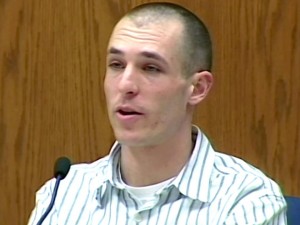
The car was found without license plates, with only a few branches and boards thrown on top of it, within walking distance of a car crusher that Steven Avery knew how to use.
The point that the sheriffs or deputies only had 48 hours to plant the car on the Avery property is meaningless when one considers that the property was not properly controlled as a search scene or crime scene – with officers logged in and out – until November 5th. The entire Manitowoc county Sheriff’s department could have been on that property and no-one would have been any the wiser.
Neil:
In rebuttal, there is no actual evidence from anyone that the vehicle was seen anywhere other than in the Avery compound.
The defendant’s DNA was found on and in the victim’s vehicle
Neil:
This was one of the key areas of debate for both sides, the nature of the DNA, but the series did omit one crucial factor: not all of Avery’s DNA was in blood.
Avery had a substantial cut on the middle finger of his right hand , and Avery’s blood was found in the victim’s car, by the ignition, the placement of it consistent with someone starting the ignition (if the cut had been on the left hand, it would have involved the person reaching across the wheel to start the car). Teresa’s blood was found in the car, which was a contact stain, consistent with her bloodied hair resting against the surface.
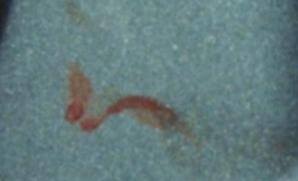
Avery’s DNA was also found in sweat located in the latch under the bonnet clasp. This is consistent with the theory that Avery deliberated disabled the battery to prevent Teresa Halbach from leaving.
Steve:
None of Avery’s fingerprints were found in the car. Zero. Fact. The prosecution case is that the blood, which is VISIBLE, got there from a cut on Avery’s finger. If what the prosecution say is correct, how did the car get from where Teresa Halbach parked to where it was found? Steven Avery had to have driven it, right? So he murderers Teresa, gets in the car, bleeds all over it, drives it to where it was found, gets out, carefully, methodically wipes down the car to remove every single one of his fingerprints, which would not be visible to the naked eye, but leaves behind visible blood stains? The only other alternative prosecution explanation is that Avery wore gloves and that’s why there are no fingerprints in the car. But that doesn’t fit either – because Avery’s only cut was to his finger, and if he’s wearing gloves he can’t bleed on the car.
The other relevant facts are these. A vial of Steven Avery’s blood was held in the Manitowoc County Court Clerk’s office. In an open box of evidence, not locked away, in an office which the Sheriff and his deputies have unfettered 24 hour access. The blood was in a polystyrene evidence box – which had red evidence tape around it, sealing it. The tape was cut, and someone had attached Scotch tape to the box to keep it closed. When evidence like this is sealed – it means you can only break that evidence seal with a court order. The first court order that was ever granted for the inspection of this evidence was when Avery’s defence attorney’s got an order from the court and found the vial of blood in a box with the evidence seal broken. This is fact. So whoever broke that seal – broke the law. Why?
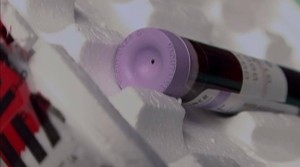
The EDTA preservative in that vial of blood was not found in the samples of blood taken from the car that the FBI tested. The FBI invented a test to determine if EDTA was in the blood in the car – and they didn’t find EDTA. However, the defence expert confirmed the shortcomings in the science of the FBI by testifying that it’s not possible, currently, to accurately test for EDTA in samples. They created a test to do it. The fact that it wasn’t found in the test, doesn’t mean it wasn’t there. Many of you watching the documentary heard Jerry Buting say he didn’t trust the FBI’s test, which they created for this case. Many of you probably thought, “The FBI wouldn’t lie about forensic tests, that’s ridiculous.”
Think again.
For years the FBI held out microscopic hair fibre analysis as a definitive forensic method of detection. As a result of pressure from the Innocence Project and other factors, the FBI decided to conduct a review of approximately 3000 cases. A press release on the FBI’s website in April 2015 stated that so far they’d examined 268 hair fibre conviction cases and determined that erroneous or false statements were made by FBI agents in 257 of those cases. That’s errors or lies in ninety-six percent of those cases by FBI agents. A whistleblower from the FBI lab said that he was told agents would perjure themselves rather than embarrass the bureau and that they all do it.
The contact stain of Teresa Halbach’s blood and hair in the trunk of her car is actually a point in Steven Avery’s favour. It is consistent with the proposition that she was killed elsewhere and her body moved to Avery’s property. Why is that?
Well, the prosecution argued in Steven Avery’s case that she was killed in his Garage by being shot in the head with a .22 caliber bullet. They argued something completely different in Brendan Dassey’s case – they said she was killed in Avery’s trailer by having her throat slit. Shooting someone in the head creates a fair amount of blood spatter – so does slitting someone’s throat. None of her blood was found in either the trailer or the garage. None. Fact.
Also, if she was murdered in either of those places and burned in the pit as the prosecution allege, it would have been logical for her body to have been dragged the few feet to the pit. It’s much harder to pick up a dead body than it is to drag it. It’s also much harder to pick up a body and lift it into the trunk of a car, drive the car a few feet, get out, lift the body out of the car and drag it to the pit, than it is to simply drag it there. Putting a body in a trunk is much more consistent with the body having been moved a significant distance.
The DNA from sweat.
If I wiped my sweaty brow, shook hands with you, and you then touched your car, my DNA would like transfer to that part of the car that you touched. It proves nothing and calls for more speculation. The film makers have recently made the point that in the trial, it was established that the forensic officer who found the DNA on the hood latch had just finished examining Avery’s car and neglected to change his gloves. It’s easy to see how that DNA could have been inadvertently transferred from Avery’s car to the hood latch on the officer’s gloves.
Neil:
Hoping that EDTA might be in the blood, even though analysis of it showed that there was no evidence of it, is a triumph of hope over evidence. The blood was analysed. It contained no EDTA. I am not aware of any evidence to suggest otherwise.
Although the documentary showed one of the defence lawyers state in conversation that someone in the lab had told him that they don’t penetrate the rubber stopper when taking samples, this is merely evidence of the bias of the documentary. No evidence was produced by the defence, or at least not aired in the series, of the seniority or experience of that person, nor was any evidence of it presented in court. In fact, it is best practice for samples to be taken by inserting the syringe through the stopper, as it prevents the vial contents from being contaminated by external factors and maintains the seal. If the police officers had been involved in the removal of this, it seems a surprise that they adopted the best practice whereas the lab didn’t when testing for DNA many years earlier.
Although the defence pointed to the availability of the blood sample, no evidence was produced that any officer visited the court office and interfered with the evidence box. Rather, the documentary invited the viewer to speculate that the police sneaked into the courthouse without being seen, drew some blood, sprayed some into the seized car without being seen, and then invited a comparison from a different police body, the FBI, to show that it could not be the same blood as in the vial. Why? The defence theory was that the police framed a man they believed to be guilty. Why risk tainting a crime scene object that already had Avery’s sweat DNA on it, and when that wasn’t even the principal piece of evidence?
I’m sure the film makers would like to say that the DNA was mere contamination, which in their determination to prove Avery’s innocence shows again their bias in how they choose to present the case. It’s a matter of weight, not proof of an absolute fact, and I’m used to the defence trying to pick at each thread of a case. What carries weight, however, is the sheer volume of threads.
The victim’s burned body and personal property was found in a pit that had been used by the defendant to burn scrap items
Neil:
On the evening of Teresa Halbach’s disappearance, Avery started a large fire in a pit close to the trailer where he lived. This was used to burn scrap items, including tyres, and also the victim’s body. Her burnt remains were found in the remains of the fire, some of which were intertwined with the steel belts from the burned tyres, refuting any suggestion that the body was burned exclusively elsewhere and dumped into the ashes.
Teresa Halbach’s phone, camera and PDA were found burned in a barrel twenty foot from Avery’s front door.
Steve:
A lot of Avery’s family watched that bonfire. You think they might have noticed a dead body in the fire?
Steel holds a lot of heat. If steel is burned in such a severe heat that, on the prosecution evidence, was enough to calcinate bone, it would probably retain a lot of that heat for a long time. Who is to say when those cremains made it into the fire pit – and on what date? Again, speculation. There is no evidence to say those tyres were burned on October 31st, who those tyres belonged to, or when the bones were burned. No evidence whatsoever.
The bullet bearing the victim’s DNA was found on the defendant’s premises and was fired from the defendant’s gun
Neil:
Avery had a gun hanging on the wall over his bed. It was seized by the police on November 6th. The bullet found embedded into the floor of Avery’s garage was not discovered for four months, but what is essential is that Teresa Halbach’s DNA was on it and it was fired from the gun taken from Avery’s bedroom, with “Steve” written on it. By November 6th, Teresa Halbach’s body had been burned. It is not possible for a bullet to have been fired by the police after they took possession of that gun and for it to contain Teresa’s blood DNA.

Further, According to the mother of Brendan Dassey, Avery’s nephew, Brendan returned home on October 31st and told her that he had been cleaning Avery’s garage floor with bleach, and there was bleach on his jeans.
Steve:
I have to correct my friend, Mr White, on this one. No blood was found on the bullet. If a spot of blood was found on the bullet, that blood could have been removed and tested. As it was, the entire bullet was tested. Using this method meant that it could only be tested once. After that, the bullet could never be tested again because the method of testing essentially destroyed the ability to retest. DNA was found on the bullet. Actually, as a result of the forensic DNA tests done on this bullet, two sets of DNA were found. One set of DNA results supposedly belonged to Teresa Halbach, The other set of DNA results found in that test belonged to the forensic officer who conducted the test. Fact.
The protocol for forensic officers that get this result in testing is clear. According to protocols, which are DESIGNED to ensure fair, impartial and accurate testing has been done, when this happens the test is to be deemed inconclusive.
The forensic officer broke protocol and declared her findings accurate – contrary to accepted and good scientific practice.

So how did the forensic officer’s DNA get into the test? We know for a fact it was there – but we don’t know for certain how it got there. The officer believes it got there because she breathed on it.
There is another reasonable explanation. Multiple samples of Teresa Halbach’s DNA was already in the possession of the crime lab. Fact. To identify the bone fragments as Teresa Halbach’s the lab would have needed to have a sample of her DNA on file. Where they got that from I’m not sure – it could have been a hair follicle from her home or something along those lines. But they needed to have a control sample, of Teresa’s DNA to compare with the DNA extracted from the bones, otherwise they wouldn’t know it’s Teresa’s DNA. They also had her DNA from the bloodstain and hair in the trunk. Considering the forensic officer’s own testimony that the testing she carried out on the bullet was so sensitive that it could have been corrupted by her breathing some distance away from the sample, is it not also equally possible that another sample of Teresa’s DNA, one of a number of samples, held in the SAME lab, by mistake or accident or something else, found its way into the test on the bullet?
After all, this is a case where the forensic officer has already contaminated one piece of evidence – the bullet. Cross contamination happens.
In 2012 a DNA sample on chain left by one of the Occupy Wall Street Protesters was linked to an earlier murder. It swiftly became clear that it was contamination by the forensic officer touching both the chain and evidence from the murder case. In 2008 Boston shut down its crime lab because it was so bad. In 2015 the Wisconsin Department of Justice (Manitowoc County is within the state of Wisconsin) fired the crime lab manager because of serious staff performance issues, misconduct, failing to implement or communicate policies and failing to test samples.
The defendant’s previous conduct showed a propensity to commit this type of behaviour; namely, behave in an aggressive way, particularly towards women
Neil:
Steven Avery is not a pleasant man. In his lifetime he had robbed a bar and doused a cat in petrol before setting it alight. Of the eighteen years served for being wrongfully convicted of rape, six were for running a female relative off the road in his car and threatening with her in a gun.
When in prison, he made threats to kill his ex-wife in written correspondence, drew up plans for a torture chamber, and told fellow prisoners that the best way to get rid of DNA is by burning the body.
Three weeks prior to Teresa’s murder, Avery bought leg-irons and handcuffs. Although the items themselves are at the playful end of the market, rather than medieval items of torture, it’s interesting that young Brendan Dassey described something Avery had, and which were bought for presumably private and intimate use.
In 2004, Avery was investigated over an allegation of sexually assaulting a 16-year old relative but he was not charged, as the complainant did not pursue it due to threats from Avery to kill her family. Following his arrest and detention, this complaint was resurrected.
Steve:
I’m not going to defend Steven Avery’s past. Teresa Halbach’s blood or DNA was not found on those leg-irons or handcuffs.
The rest is more prejudicial than probative.
Neil:
In rebuttal, bad character evidence is inherently prejudicial, but Parliament decided that it should be allowed where it shows a propensity to commit a certain type of offence, or to correct a false impression, to ensure that a jury receives a full picture. In this instance, the documentary sugarcoated Steven Avery and glossed over his cruel and violent past, and that should be taken into account.
Steve:
Avery’s past convictions would be admissible on the basis that he is challenging the character of the police officers. He’s opening that door. But there is no history of violent sexual behavior towards women. Oh, wait, apart from the rape conviction which was overturned because it was clear that Manitowoc County Sheriff’s department not only framed him for that crime, but ensured he stayed in jail even after other law enforcement agency called them up and told them – YOU’VE GOT THE WRONG GUY IN JAIL!
THE DEFENCE CASE – BIAS
Steve:
There are a number of distinct and crucial sources of bias which have infected this case.
Jury Bias.
Take a look at these photos of Steven Avery. One is a photo of the prison garb that Avery wore after his arrest. It’s an almost Dickensian black and white striped prison uniform and Avery is also manacled and shackled in this photo. Now take a look at this photo of Avery during the trial. He’s wearing his ordinary clothes and he’s not handcuffed.


In one picture he looks guilty as hell, doesn’t he?
Every potential juror in the case watched Avery surrounded by correction officers, shackled and wearing that prison garb on their TV screens for MONTHS before this case ever got to trial.
I say that there is a real risk that the extensive media coverage of Avery, in that outfit, poisoned the jury pool. There is a real risk that it made the entire jury biased.
You don’t have to take my word on that – the United States Supreme Court thinks this way too. Here’s an extract from the judgement in US Supreme Court decision in Estelle v Williams [1976] Part 1, fourth paragraph:
“The potential effects of presenting an accused before the jury in prison attire need not, however, be measured in the abstract. Courts have, with few exceptions, determined that an accused should not be compelled to go to trial in prison or jail clothing because of the possible impairment of the presumption so basic to the adversary system…The American Bar Association’s Standards for Criminal Justice also disapprove the practice. ABA Project on Standards for Criminal Justice, Trial by Jury 4.1 (b), p. 91 (App. Draft 1968). This is a recognition that the constant reminder of the accused’s condition implicit in such distinctive, identifiable [425 U.S. 501, 505] attire may affect a juror’s judgment. The defendant’s clothing is so likely to be a continuing influence throughout the trial that, not unlike placing a jury in the custody of deputy sheriffs who were also witnesses for the prosecution, an unacceptable risk is presented of impermissible factors coming into play. Turner v. Louisiana, 379 U.S. 466, 473 (1965).”
That’s why Avery was allowed to wear his own clothes during the trial. However, two points arise here. First, it’s too late. Letting him wear a plaid shirt to trial is too little too late. The jury saw Avery in that prison uniform for months before the trial – that was bound to have an effect. Not only that, but they saw Avery every time Brendan Dassey appeared on screen and Avery was referred to time and time again as a raping, mutilating and killing Teresa Halbach. Ultimately, the rape charge disappeared, but the Brendan Dassey publicity didn’t. Second, Avery’s attorneys, the excellent Buting and Strang, were alive to this potential prejudice and asked the judge to direct the jury to disregard all media reports that they heard and saw prior to the trial beginning and give a special direction to ignore everything they’ve heard about Brendan Dassey. The judge refused. The jury had that phrase, “raping, mutilating and murdering Teresa Halbach,” Dassey’s confession, and that jailhouse image of Avery, burned into their minds.
The jury was poisoned. Again, don’t take my word for it. Even though the trial took place elsewhere, the jury came from Manitowoc County. Before the trial began, questionnaires were sent to the one hundred and thirty potential jurors. How many, of those one hundred and thirty, answered that they would be willing to assume Avery innocent? One. Just one person said, “Yeah, I’m willing to assume him innocent.”
In his motion for curative relief, Dean Strang quoted typical answers to juror questionnaires: – “Yes, I already think he’s guilty,” “A trial is pointless,” “I read everything there was on the Internet and in the newspaper on this case including Dassey’s interview confession with detectives,” and more…
In my respectful submission, without a special warning to the jury about the media publicity, and a special warning to the jury not to take the Brendan Dassey confession into account, the case is over before it starts. The minds of the jurors were poisoned, whether they knew it or not, before a word was spoken in court.
Neil:
One needs to be very wary in asking American jurors to don UK lenses when assessing any potential prejudice arising from the images of Avery prior to the trial. They are accustomed to that system and apply fairness and justice in that context. I need only cite the most famous criminal case in the United States of the last few decades, and that is OJ Simpson. The media speculation on that case was rife, and the jurors could not have avoided footage of him running from the police nor of him appearing in earlier court hearings in his prison garb. Nonetheless, the jurors assessed the evidence as they heard it and acquitted him.

The case referred to above, Estelle-v-Williams, deals with the wearing of prison garb when in the presence of the jurors during the trial, not of any pre-trial images. There was no more or less prejudice towards Avery than in any other case. Even in this country, it is not unusual for defendants to be filmed and photographed leaving and entering courts and prison vans, handcuffed to someone.
The right to an impartial jury is a right enshrined in the sixth amendment to the US constitution, and the individual states determine the make up of juries and the rules regarding their selection. What is illuminating in the Avery case is that the appeal lodged by Avery to the Wisconsin Courts of Appeal in April 2011, the only complaint raised by Avery in relation to the jury was the action taken in respect of the alternate juror, when an existing juror was excused after a day of jury deliberation.
It is noted in the appeal that Avery was given three options when the juror asked to be excused: to proceed with fewer than twelve jurors, proceed with a substitute juror, or ask for a mistrial. Avery consented to the use of a substitute juror.
If the bias of the jury was such that the defence feared an unfair trial, they had the mistrial option. They chose not to use it. That deals with the perception of jury bias as far as those people used to working in that system.
Bias of Calumet County Sheriffs and Manitowoc County Sheriffs.
Steve:
Manitowoc – I can give you thirty-six million reasons pointing towards their bias. They admitted themselves they had a conflict in this case. The sheriff at the time of this trial said that any allegation that they framed Avery for murder was absurd because if they wanted to nail Avery, according to the Sheriff, it would’ve been much easier just to kill him! In addition, the strongest piece of evidence in the Avery civil suit was the phone to call to Colborn from a neighboring police department telling him he had the wrong man in jail for rape. Colborn passed that information to Lieutenant Lenk, or so Colborn said in a memo about that call made eight years later. Colborn called in the licence plate on the day Teresa went missing, and Lenk found the key to Teresa’s car, with Avery’s DNA on it, in Avery’s bedroom on the sixth time of searching.

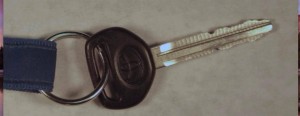
Funny that.
Notice how Neil never even mentioned the magic key in his case. That’s because he’s a fair man. He knows it was planted, he knows the DNA was planted on that key. If they can scrub DNA off the key and plant Avery’s, surely they can do that with the blood from the broken evidence seal box, and use a little DNA on the latch hood too.
Calumet County Sheriffs – Biased? Really? You bet.
This was the most high profile murder investigation in the history of the State. Fact.
When Avery was arrested for the murder, his then lawyer couldn’t find him. He asked and asked and asked, and was told by the Sheriff’s Department they didn’t know where Avery was being held. The Calumet Sheriff himself was asked on camera – “where is Steven Avery.” He said he didn’t know. Do you buy that? I don’t. Did Steven Avery go through interrogation for murder without his lawyer present? Yes, he did.
Also, Weigert and Fassbender, who handled the investigation, coerced Brendan Dassey into a confession. You all saw that. I don’t need to go over it. That’s evidence of bias. And notice, Neil and I aren’t debating the Brendan Dassey case. That’s because there is no debate – that kid needs a retrial. No question. And with a good lawyer this time. And just a quick point – Avery was convicted of murdering Teresa Halbach by shooting her in the head with a .22 caliber rifle in his garage. Dassey was convicted of murdering Teresa Halbach in Avery’s trailer, and her death was due to having her throat cut.


These cases fell below the basic standards of justice which every citizen deserves. Teresa Halbach deserved more from the justice system. It has failed her as much as it failed Avery and Dassey.
Neil:
As I’ve stated earlier, I’ve no interest or motivation to defend the different police departments. The Manitowoc Police Department acted with too much enthusiasm in pursuing the person they believed to be guilty, and in an ideal world they should have taken a step back and considered how their actions could be misinterpreted. As a prosecutor, it was frustrating when wrong decisions taken by well-meaning people handed the defence an opportunity to apply a smokescreen to an otherwise strong case.
In relation to Brendan Dassey, I accept that the evidence in relation to him is shaky, in that it relies on an interview that would not be admissible in this country. If I were prosecuting a case and that Dassey interview landed on my desk, it would be on a one-way trip to the bin. Thankfully, the rights of young people are much better protected here and the police would not have conducted themselves in that way in the UK.


As for the key, this was found when an officer forcibly moved a cupboard, causing it to drop down. There is no forensic or eye-witness evidence to support the contention that it was planted. It’s not entirely clear from the defence arguments where this sample of Avery’s DNA came from that contaminated the key. After all, if there is any credence to the defence case, of a framing, they had to do nothing more than smear some of the apparently stolen blood on it and leave it in the car. Instead, it is asserted that they took the key away from the compound, found some of Avery’s DNA, took the key back to the trailer, dropped it without being seen nor importing any of their own DNA onto it.


Steve:
Cops are trained to remove evidence from a scene without infecting it with their own DNA using rubber gloves and evidence bags.
Closing arguments
Prosecution – Neil White
The defence arguments amount to the Oliver Wendell-Holmes theory of legal strategy: if you’re strong on the law, argue the law. If you’re strong on the facts, argue the facts. If you’re strong on neither, bang on the table.
The defence are banging on the table, nothing more. It’s all ifs, buts, and wannabe, because everyone loves a conspiracy. They’re exciting, the dark movements of power and authority. In reality, what you have are the inefficiencies and inadequacies of a small police department, which, although imperfect, does not establish a deliberate conspiracy to frame Steven Avery. Instead, I ask that you focus on the actual evidence.
Ask yourself these key questions, and if any one of them can be answered in Avery’s favour, the defence might have a case, but they can’t.
Is there any evidence from anyone that shows that Teresa Halbach was with anyone after leaving Avery, or that she even left Avery? The answer is no.
Is there any evidence from anyone that her vehicle was seen anywhere other than Avery’s scrapyard after her appointment with him? The answer is no.
Is there any evidence that shows, to a reasonable degree of scientific certainty, that the blood in the car did in fact come from that vial? The answer is no.
Is there any evidence from anyone that police officers attended the court office and examined the box of evidence that contained the vial of blood? The answer is no.
Is there any evidence from anyone, as a matter of scientific fact or eye-witness evidence, that the police dropped the key in Avery’s bedroom? The answer is no.
Is there any evidence that Steven Avery has in the past shown a propensity to cruel and violent behaviour? The answer is yes, and in the UK evidence of bad character relating to propensity to a certain type of behaviour can be admitted.
Is there any evidence from Steven Avery that would answer any parts of the prosecution case? The answer is no, because he chose not to give evidence, and in the UK that would allow a jury to infer guilt.
Consider the evidence, the actual evidence, and don’t speculate on what the evidence might have been, and you can be sure that Steven Avery murdered Teresa Halbach.
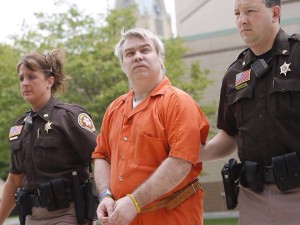
Defence – Steve Cavanagh
You’ve read my arguments – you know the case. According to Neil, the documentary was one-sided. Typical Prosecutor. In my view, Ken Kratz got a lot of air time. The fact that he put his foot in his mouth every time he was on camera, and smiled in the press conference where he detailed Teresa’s death, doesn’t really help him but that’s his own damn fault. As I understand it, the film makers asked Kratz if he wanted to be involved and he declined.
I’m inviting you to consider that the prosecution have not, on any aspect of the evidence, proven beyond a reasonable doubt that Steven Avery is guilty. Doubt is abundant here. And that’s the only test. Not, “do you think he did it?”
Bear in mind, always, Manitowoc County Sheriff’s had already framed Steven Avery for a crime he didn’t commit. Surely the worst bad character evidence in this entire case relates to the Manitowoc Sheriff’s department, and the previous District Attorney. Now that’s bad character.
Each piece of prosecution evidence has a question mark hanging over it, doesn’t it? The key that wasn’t found the first five times the trailer was searched, the blood and lack of fingerprints in the car, the inexplicably broken seal on the blood vial. In fact the whole case doesn’t make sense. Avery knew there would be a record of the victim visiting his address last, and he was seen with her. On the prosecution case, he then shot her, in his own garage, with his own gun that had “STEVE” written on it, he threw a couple of branches over her car and parked it at the top of his lot instead of crushing it, he dismembered and burned her body behind his house and invited his relatives to the bonfire, left her personal items in a burn barrel on his property but kept her car key in his bedroom. Then he gave an interview on TV about her disappearance, and somehow then got smart enough to forensically remove all traces of her blood from his garage, trailer, and wiped her DNA from her key but left his own DNA on it? Wiped his invisible fingerprints clean off her car but left visible blood smears?
On the prosecution case he’s both the smartest and dumbest criminal in US history.
Do you think the prosecution have proven that he murdered Teresa Halbach beyond a reasonable doubt? I don’t think their case adds up. I’m inviting you to say no, and conclude that Steven Avery is not guilty of murder.

 YOU Decide, Join the Discussion
YOU Decide, Join the Discussion
Join the Discussion on Twitter
#MAMYouDecide
Tell Neil what you think @NeilWhite1965
Tell Steve what you think @SSCav
Find Me on Twitter @Lizzy11268 and vote on the poll.
Join the Discussion on Facebook
Author Page Neil White
Author Page Steve Cavanagh


Find out more about Neil here and buy his books here
Find out more about Steve here and buy his books here
Making a Murderer – You Decide.
Over to you!







